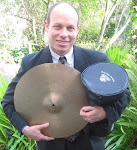British academic Ray Laurence wrote Roman Passions, A History of Pleasure in Imperial Rome (Continuum, London, 2009) to fill a void. Historians and researchers had not yet looked deeply into Roman pleasures. This book examines in detail the enjoyment of country villas, the baths, sex, dining, music and dance, violent entertainment, and art.
Laurence debunks many longstanding myths about Roman society, for example, the myth of orgies. Sex was, for the most part, private. Roman eating could be outlandish but only for the rich. If one was rich one's diet was quite varied and sophisticated, based on contrasting flavors and a fish paste. Laurence connected the culture of consumption, which peaked in the first century CE, to economic growth and a building boom. "Cores from the Greenland ice cap reveal a peak in atmospheric pollution in antiquity occurring about 2,000 years ago, in other words, from the beginning of the first century CE" (P. 161). This level of production needed to produce these levels of atmospheric pollution was not seen again until the industrial revolution in the early 19th century (ibid.). And the Romans built and polluted with a much smaller population!
Laurence could be talking about 19th century Britain or our own times in America when he tells us that the Roman empire "was the first global economy with cheap products (such as wine) being produced in the provinces for consumption in the capital" (ibid.) The better we understand what went on in ancient Rome, the better we understand our behavior in 21st century America. Since we know what happened to Rome and why, we may have a glimpse on what our future holds as well.
The book is heavily footnoted by a well-known antiquities scholar but is not dense--it flows easily and is lots of fun to read.




No comments:
Post a Comment